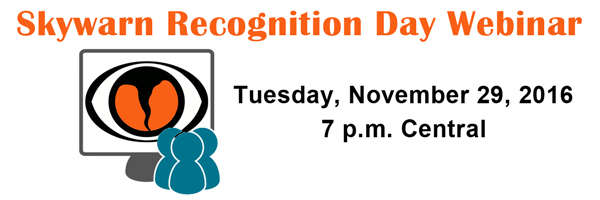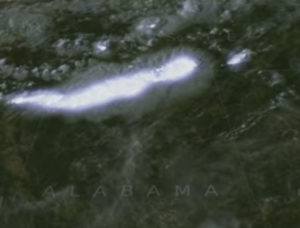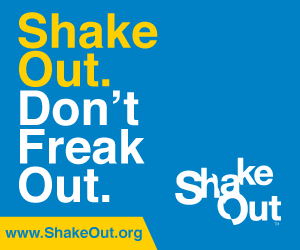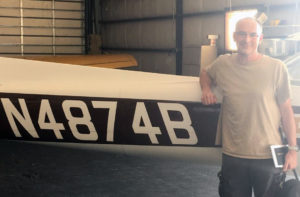update: This event has already taken place. We are leaving this news item up for archival reference. However, all personal contact information previously posted in this article has been redacted. If you wish to contact Dave, KD0TUN or Norm, N0GRL, about future classes and tests, you can do so via their pages on QRZ.com. Or you can use the Contact page on this Website to contact the Webmaster who can forward your message.
An all-day Amateur Radio Technician Class is coming up on Saturday, December 10, 2016, at the LDS Church at 1309 N. 20th Street in Ozark, Missouri. Take Highway 65 and exit at Jackson Street (Highway 14) and then proceed north on 20th Street parallel to Highway 65. This church is new and is visible from Highway 65.
The class starts at 7:00 a.m. and runs until 5:00 p.m. There will be a very brief lunch break in the middle, and folks are encouraged to bring their own lunch, snacks and drinks. There are fast food restaurants nearby, but, again, the lunch break will be very short.
Following the class will be a testing session which starts at 5:00 p.m.
The total cost for both the class and the testing session is $14. Space is limited, so you are encouraged to R.S.V.P. and pay in advance to guarantee yourself a seat.
Please bring 2 forms of identification.
Prior to the exam, you are encouraged to visit www.hamexam.org and register a name and password (it’s free) so the program can keep track of your progress. Then study all technician flash cards and questions. This, along with the day-long class will help you to pass your test.

 A webinar will be offered on Tuesday, November 29, 2016 at 7 p.m. Central in advance of the 18th SKYWARN Recognition Day (SRD) on December 3, 2016.
A webinar will be offered on Tuesday, November 29, 2016 at 7 p.m. Central in advance of the 18th SKYWARN Recognition Day (SRD) on December 3, 2016. 
 Improvement in tornado and severe thunderstorm lead times and false alarm reduction, early warning of lightning ground strike hazards, and improved routing of commercial, military, and private aircraft over oceanic regions where observations of thunderstorm intensity are scarce are just some of the many features that the first operational lightning mapper ever flown in space will provide when the GOES-R Satellite launches this month.
Improvement in tornado and severe thunderstorm lead times and false alarm reduction, early warning of lightning ground strike hazards, and improved routing of commercial, military, and private aircraft over oceanic regions where observations of thunderstorm intensity are scarce are just some of the many features that the first operational lightning mapper ever flown in space will provide when the GOES-R Satellite launches this month. Daylight Savings Time ends this weekend here in Southwest Missouri and throughout most of the United States. This Sunday, November 6, 2016, at 2:00 a.m. local time, we revert back to Central Standard Time as we turn our clocks back one hour. Safety officials also suggest that this is a great time to test and/or replace the batteries in your smoke detectors and carbon monoxide detectors.
Daylight Savings Time ends this weekend here in Southwest Missouri and throughout most of the United States. This Sunday, November 6, 2016, at 2:00 a.m. local time, we revert back to Central Standard Time as we turn our clocks back one hour. Safety officials also suggest that this is a great time to test and/or replace the batteries in your smoke detectors and carbon monoxide detectors. Forecasters at the National Oceanic and Atmospheric Administration’s Climate Prediction Center say a weak and short-lived La Nina condition over the Pacific Ocean may continue our current warm and dry pattern into this coming winter. The Climate Prediction Center issued a La Nina watch earlier this October, predicting the climate phenomenon is likely to develop in late fall or early winter. La Nina favors drier, warmer winters in the southern U.S and wetter, cooler conditions in the northern U.S.
Forecasters at the National Oceanic and Atmospheric Administration’s Climate Prediction Center say a weak and short-lived La Nina condition over the Pacific Ocean may continue our current warm and dry pattern into this coming winter. The Climate Prediction Center issued a La Nina watch earlier this October, predicting the climate phenomenon is likely to develop in late fall or early winter. La Nina favors drier, warmer winters in the southern U.S and wetter, cooler conditions in the northern U.S. At 10:20 a.m. on October 20, 2016, millions of people “Dropped, Covered, and Held On” in The Great Central U.S. ShakeOut, the region’s largest earthquake drill ever! Participating locally was the Douglas County Amateur Radio Club (D.C.A.R.) which held a net on their repeater at 145.150 (-) PL 162.2.
At 10:20 a.m. on October 20, 2016, millions of people “Dropped, Covered, and Held On” in The Great Central U.S. ShakeOut, the region’s largest earthquake drill ever! Participating locally was the Douglas County Amateur Radio Club (D.C.A.R.) which held a net on their repeater at 145.150 (-) PL 162.2. Most of the time, when thinking about amateur radio, we usually consider the location of the person on the other side of the microphone as either being inside their ham shack, driving down the highway, or walking around while talking on their HT. It’s not often when we look up into the friendly skies while trying to make our next contact. That may change in the near future as one of our own Skywarn participants earns his private pilot certificate.
Most of the time, when thinking about amateur radio, we usually consider the location of the person on the other side of the microphone as either being inside their ham shack, driving down the highway, or walking around while talking on their HT. It’s not often when we look up into the friendly skies while trying to make our next contact. That may change in the near future as one of our own Skywarn participants earns his private pilot certificate.